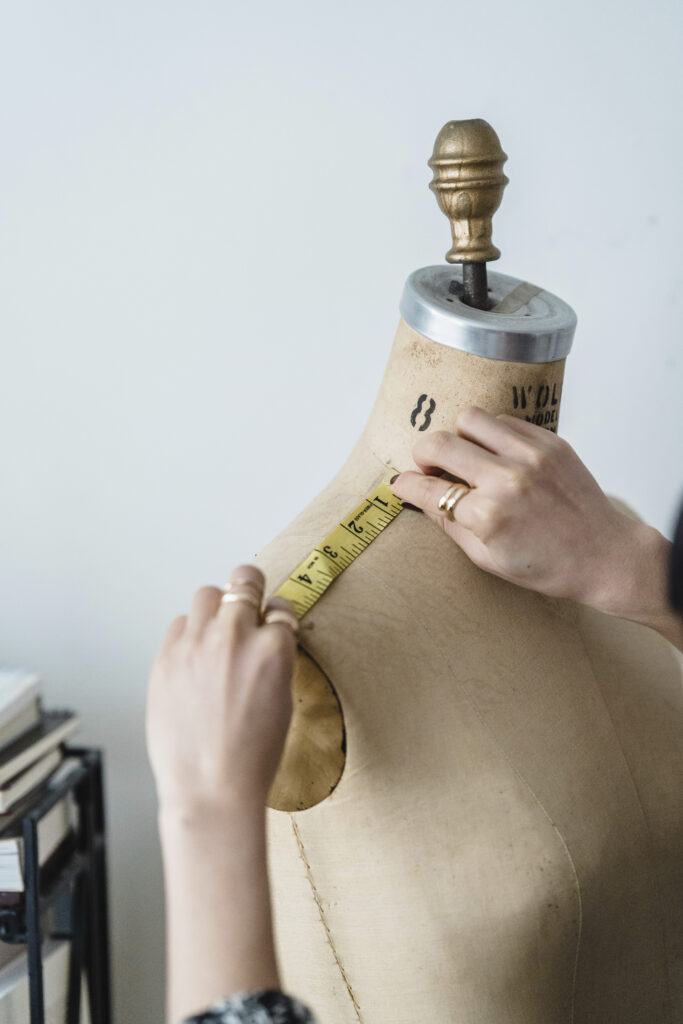
SHIMLA, India — Sheenam Sharma, a 24- year old, based in the north Indian city, Chandigarh loves buying from the latest collections of fast fashion brands, never shops online. She says she can never find a size that fits her well.
“I am petite, so I wear the XS (extra small) size, but whenever I try on a pair of pants or jeans, it’s always too long for me, even if the size is XS,” says Sharma. “Also, something that fits on my hips is invariably loose on my waist.”
Just like Sharma, many Indians find it difficult to find a perfect fit.
But there’s hope on the horizon.
The Ministry of Textiles and the National Institute of Fashion Technology (NIFT) are conducting a survey called “INDIAsize” that will result in a standardized size chart for the ready-to-wear segment.
INDIAsize will generate an anthropometric (scientific study of the measurements and proportions of the human body) database of Indian body dimensions, which will enable the retail apparel business to create suitable clothes for the Indian body type. The project was initially announced in February 2019 but was delayed due to the coronavirus pandemic.

Professor Noopur Anand from NIFT, principal investigator on the project, says that research studies conducted on fit and human-body measurements across the globe indicate that a large percentage of consumers face difficulty in finding clothes that fit them perfectly according to their body measurements.
“The overarching reason is differences in the anthropometric build of people in different geographical regions,” Anand told Zenger News.
“This has led countries like the USA, Canada, Mexico, UK, France, Spain, Germany, Sweden, Italy, Netherlands, Thailand, Korea, China, and Australia to undertake national sizing surveys to create an anthropometric database of measurements. These measurements are a true representation of the entire population, to cater to the retail industry. The size charts and insights generated through these surveys and corresponding analysis have helped the garment industry provide well-fitting garments designed for the body structure of the native population.”
Anand says India faces a size dilemma because the Indian apparel industry uses size charts that are the tweaked versions of size charts of other countries and are created from instinct and experience rather than proven scientific study.
“The INDIAsize survey will result in the creation of a size identification number for a customer through mapping, categorization, and defining of their body size,” said Upendra Prasad Singh, Secretary, Textiles, the Ministry of Textiles, in a press release.

“This will help manufacturers to produce goods suited for the body size of the target consumer and help consumers to identify sizes that will be best suited for them, resulting in a match and, hence, improved sales,” said Singh.
Since July 2021, NIFT Delhi has collected over 5,000 samples as a part of the first leg of the data collection. The ongoing study includes representation from various age groups, income index, and origin to collate a standard size chart.
“The project required understanding of various areas governing the survey to shape its methodology, implementing, data collection and analysis,” says Anand.
Some key research areas for the survey were — international protocols and standards governing the study of this nature, suitability of state-of-art technologies available for undertaking the data collection, selection of appropriate anthropometric data points to be captured as per the requirement of the industry, population studies to capture data from a representative population of India.
The researchers also identified the socio-demographic parameters for making the database, drawing inference from challenges faced by the other countries who have undertaken such surveys to make the methodology robust.
Anand says that the data collected by the survey will be statistically analyzed. The survey will result in creating the “size identification number“ for a customer through mapping, categorization, and defining their body size.
The inability to find clothing that fits your body type results in low body image confidence, points out Urvashi Goverdhan, a body positivity activist based in Bengaluru.
“While Indian clothes are designed to fit the Indian body, there is a lot to be desired when it comes to western clothes,” Goverdhan told Zenger News. “Anything that will fit you better will boost your confidence.”

“For example, many Indians have wide hips, and Indian clothes like the salwar kameez (a loose-fitting pant and long shirt ensemble) have the silhouette to fit our body type.”
Goverdhan says that while some brands like H&M have started including Asian sizing for a petite body type, we are still a long way from finding clothes for the Indian body.
“While some brands do offer sizes all the way from XXS to XXXL, the sizes and fits they offer do not match the body type here. Plus, the availability of these sizes is often out of stock.”
Goverdhan, who moved back to India from the United States a few years ago, also points out that western clothing is often made from fabrics that are not suited for the Indian climate.
“Materials like polyester, wool, or velvet are not suitable for the warm and humid temperatures prevalent for much of the year in large parts of India. When I lived in the US, I was okay with wearing such materials because of the climate. But after moving back to India, I prefer Indian clothes made of cotton.”
“If anything, one of the key outcomes of this study would be to support the movement of body positivity,” said Anand.
Edited by Anindita Ghosh and Amrita Das
The post Tailor-Made Size Chart To Help Indians Find Right Fit appeared first on Zenger News.
